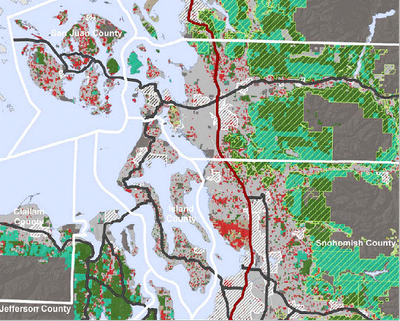A new comprehensive report—Retention of High-Valued Forest Lands at Risk of Conversion to Non-Forest Uses in Washington State—makes a good contribution to land use policy. Not only does it provide a detailed analysis of the causal factors behind forest clearing, but it includes some interesting maps of forestlands that are at especially high risk.
Best of all, the report offers a range of real solutions:
This report examines other states’ efforts and proposes that a successful state strategy to support the future of working forests must improve the value of both the timber resource and non-timber resources, such as carbon and biodiversity, and prevent forest fragmentation.
The report proposes a “supply curve” under which landowners would accept compensation to combine working forest retention and ecosystem service-enhancing forest management. To respond, public or conservation organizations must specify the terms of a “demand curve” to meet the supply in order to capture the public values that are otherwise lost with forest conversion. Such a commitment by the State of Washington will also afford public forestlands’ ability to provide more protection of critical resources.

To the extent that we’d like to preserve local forests—which strongly affect the health of Puget Sound—we should pay close attention to what’s going on, and what’s gone wrong so far. If not, we could be looking at a future Evergreen State that’s less green than it ought to be.







